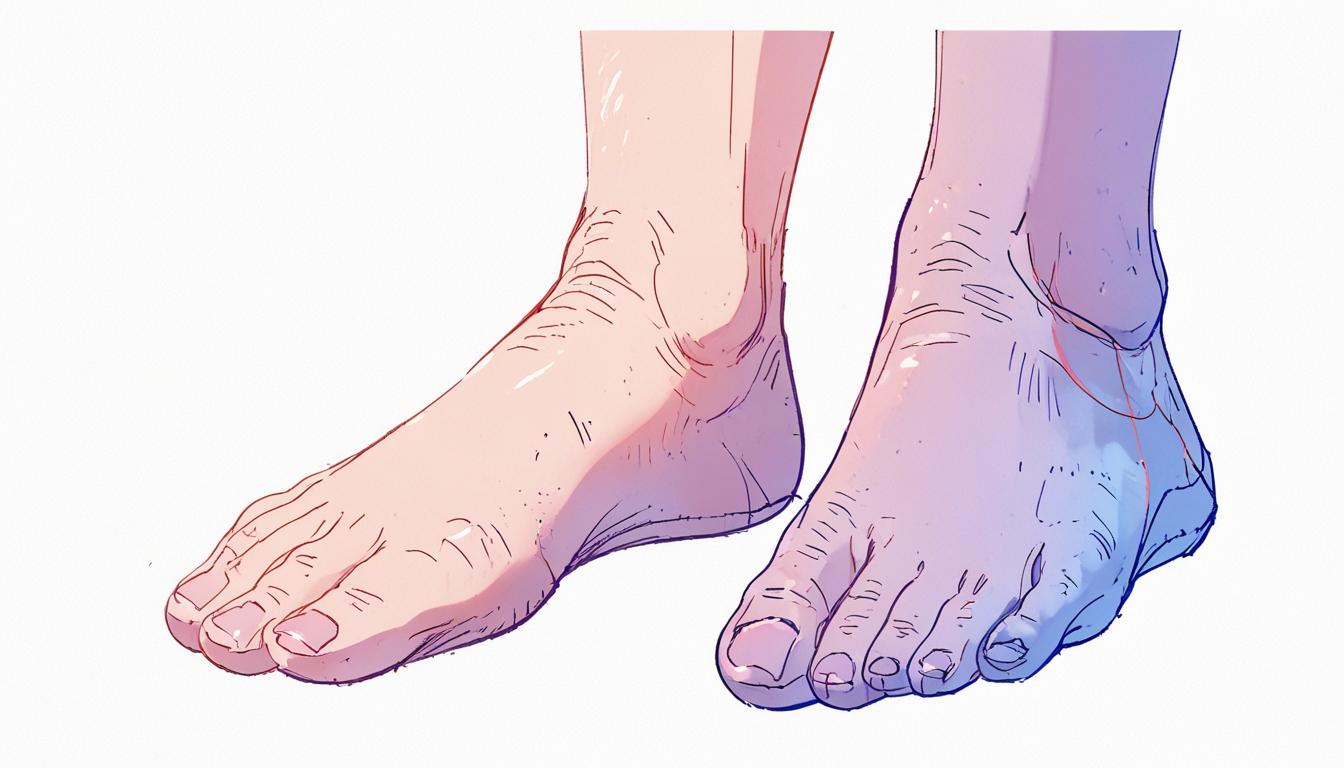Experts reveal three lesser-known foot symptoms that could indicate cardiovascular disease, highlighting the need for early detection and medical intervention.
Experts have identified three significant symptoms that may manifest in the feet, which could indicate the presence of cardiovascular disease— a condition that ranks as one of the leading causes of mortality both in the UK and globally. The condition is responsible for nearly 18 million deaths around the world each year through various complications involving the heart and circulatory system, including strokes and heart failure.
The signs that may not seem immediately alarming but warrant attention include painful lumps on the toes, noticeable swelling in the feet, and discolouration such as blue or purple hues on the toes. These symptoms have been highlighted by the American Academy of Dermatology (AAD), which aims to increase awareness regarding less commonly recognised indicators of heart issues.
Painful lumps on the toes, known as Osler nodes, may appear on both fingers and toes and can indicate a heart infection referred to as infective endocarditis. The AAD explains that while these lumps are typically temporary, lasting from a few hours to several days, the underlying infection demands medical treatment, often involving antibiotics or sometimes surgical intervention.
Swelling in the feet, medically termed oedema, can also serve as an indicator of heart dysfunction. The AAD notes that when the heart struggles to function properly, it can lead to a backlog of fluid accumulation in the feet, lower legs, and sometimes extending to the groin area. According to the NHS, this swelling is typically better in the morning but can worsen throughout the day.
The presence of blue toes can signify a blockage in blood vessels, a condition that warrants immediate medical consultation. The AAD points out that if toes appear blue or purple while the body is warm—contrary to expected discolouration due to cold exposure—it suggests that blood is not sufficiently oxygenated. This condition, known as blue toe syndrome, may lead to serious tissue damage if not addressed promptly.
In addition to these symptoms, the NHS lists more common signs of heart disease, which include chest pain (angina), shortness of breath, discomfort in the neck, shoulders, jaw or arms, feelings of faintness, and nausea. Individuals experiencing any of these symptoms are advised to consult their GP. In cases where sudden or severe symptoms occur, urgent medical assistance is recommended by calling 999 or visiting the nearest Accident and Emergency department.
As awareness spreads about these unusual but significant symptoms, medical professionals stress the importance of early detection and intervention to improve health outcomes associated with cardiovascular conditions.
Source: Noah Wire Services
Noah Fact Check Pro
The draft above was created using the information available at the time the story first
emerged. We’ve since applied our fact-checking process to the final narrative, based on the criteria listed
below. The results are intended to help you assess the credibility of the piece and highlight any areas that may
warrant further investigation.
Freshness check
Score:
8
Notes:
The narrative does not reference any outdated information or events that are clearly from the past. However, the freshness of the content is not explicitly verified since there is no specific mention of new studies or recent developments.
Quotes check
Score:
10
Notes:
There are no direct quotes in the provided text, so it is not necessary to verify them.
Source reliability
Score:
9
Notes:
The narrative relies on well-established entities like the American Academy of Dermatology (AAD) and the NHS, which are generally considered reliable.
Plausability check
Score:
9
Notes:
The symptoms described align with medical knowledge and are plausible indicators of heart disease. The explanations provided are consistent with established medical facts.
Overall assessment
Verdict (FAIL, OPEN, PASS): PASS
Confidence (LOW, MEDIUM, HIGH): HIGH
Summary:
The narrative appears to be factually accurate and current, drawing from reputable sources like the AAD and NHS. It describes plausible symptoms of heart disease without any clear evidence of outdated information or misinformation.













